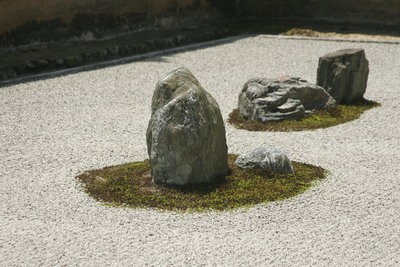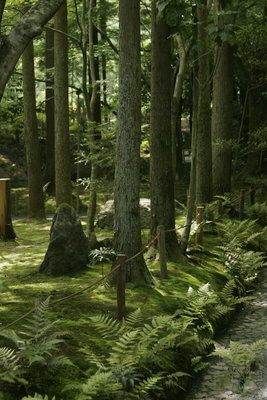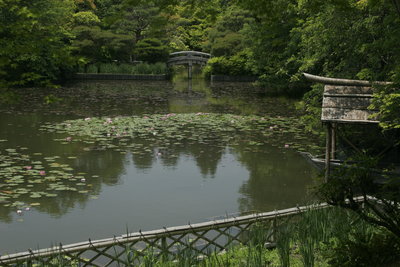 |
 |
Japanese gardens, and this rock garden in particular, seem to be less of a garden and more of a natural sculpture. As with great sculpture, the Japanese garden reveals a unique perspective at all angles, none more than this garden. 600 years after its creation, it still mesmerizes visitors.
The garden is actually great for meditation. As a Christian, I see little benefit in emptying one’s mind (since God made it to be filled up), but it would be easy to meditate and empty one’s mind. You can really only focus on one rock at a time, but each rock has enough visual interest to hold your attention, and the stones are bland enough to fade from consciousness. Probably the brightness of the stones has something to do with it, too.
According to Wikipedia, some scientists discovered that when you view the garden from the center of the temple, the distances of the rocks form a monotonically decreasing tree, and that slight movements in the rocks would destroy the beauty. Without a doubt, the garden is expertly laid out, with each rock being exactly the right distance away.
The garden is practically impossible to photograph; if you have the luxury of coming on a cloudy or rainy day you will have a much easier time. The pebbles are very bright, but the rocks are likely to be in shadow. The dynamic range is much larger than a camera can capture. Furthermore, the garden is too big to fit in an image, even with my 10 mm (16 mm after the digital sensor crop factor) wide angle lens. The wide angle shots distorted the scene in such a way as to lose the magic, too. I believe that the viewer faces west (thus the garden “faces” east), so the best time for photography is probably about 11 am, so that the sun hits the faces of the rocks, but the rocks do not yet have much of a shadow. My pictures were taken at about 1 pm, and they came out ok.
The temple’s web site (warning, heavy usage of Flash) gives some additional information.
|
|

